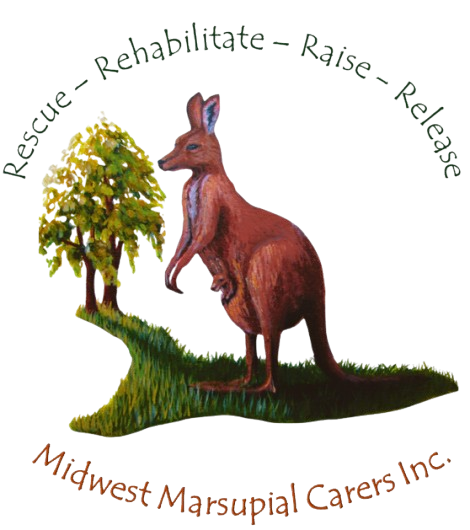Lynnie's Journey: A Tale of Hope, Healing, and Freedom
There’s something magical about the early winter mornings on our property. The sun rises lazily, painting the horizon in hues of ember red, while kangaroos graze peacefully on the perennial grasses near the house. It’s a picture of serenity, until one morning, when this idyllic scene was interrupted by the sight of a hunched Euro.
As wildlife carers, we recognized immediately that something was wrong. We approached cautiously, and as I got closer, the Euro didn’t move. She locked her gaze on me, and when I knelt down to stretch out my arm, she surprised me by grabbing it with both paws. Then, in a moment that gave me goosebumps, she buried her head into my fluffy winter coat. That’s when I realized, it was Lynnie.
Two years earlier, Lynnie had been one of our orphaned Euros, nurtured back to health and released into the wild. Now, here she was, returning to the only home she had ever known in her time of need. Her right eye was swollen and weeping, and it was clear she was in pain and had little strength left. Gently, Karin and I lifted her into a bag and settled her in our "sick bay", a familiar space in our enclosure. Outside the fence, her curious kangaroo kin watched on.
The next day, Ali, our trusted local vet, confirmed what we had feared. Lynnie’s back tooth was cracked and infected, forming an abscess that pressed against her eye. After a sedation and thorough examination, Ali assured us that Lynnie had a good chance of recovery if treated quickly. Thanks to Ali's care, Lynnie underwent successful treatment and returned home with us, tired but on the mend.
For the next 14 days, Lynnie received antibiotics, pain relief, and endless care. Her diet consisted of creative concoctions like soaked goat pellets, grated sweet potato, and, of course, her favorite milk bottle. One day, she surprised us by squeezing herself into her old joey bag, reminding us of her early days. Karin promptly stitched a larger "Lynnie bag" to accommodate her nostalgic snuggles.
But Lynnie’s journey back to health wasn’t linear. A few weeks later, we noticed an unpleasant smell on her breath, an ominous sign of a secondary infection. Ali once again stepped in, removing food lodged between Lynnie’s gum and jawbone and performing a minor surgical procedure. Thankfully, the infection had not spread further, and Lynnie returned home to continue her recovery.
As time passed, Lynnie grew stronger. Her appetite returned, and she began to explore the main pen with a small group of kangaroos. Still, she retained her independent nature, often retreating to a secluded patch of tall grasses she claimed as her own.
Eventually, the day came when Lynnie signaled she was ready to leave. She paced near the back gate that led to the open farm. That evening, we opened the gate, and she ventured out—but only for a short time. She returned to the enclosure, seeking the comfort and safety of her familiar surroundings. This pattern repeated for a few more days until one morning, she didn’t return.
We later spotted her grazing with a mob of kangaroos in the paddock, blending seamlessly into the wild. Watching her from a distance, we couldn’t help but feel a mix of joy and sadness. Lynnie had come back to us when she needed help, and now she had returned to where she belonged.
It was exactly 111 days from the morning she first reappeared to the day she left for good. Lynnie’s story is a testament to the resilience of wildlife and the profound connections we can form with these incredible creatures. She knew where to find help when she needed it, and we’ll always be here for her—and for others like her.
Here’s to Lynnie, a symbol of hope, healing, and the unyielding spirit of the wild.
We all should think about animal welfare and how we treat them.
Lynnie’s true story tells us how intelligent and affectionate these animals can be.
My wish is that everyone can open their heart and learn to treat all animals with the respect they deserve.
Thank you Lynnie you touched so many hearts already.
~ Felix Duebendorfer~
